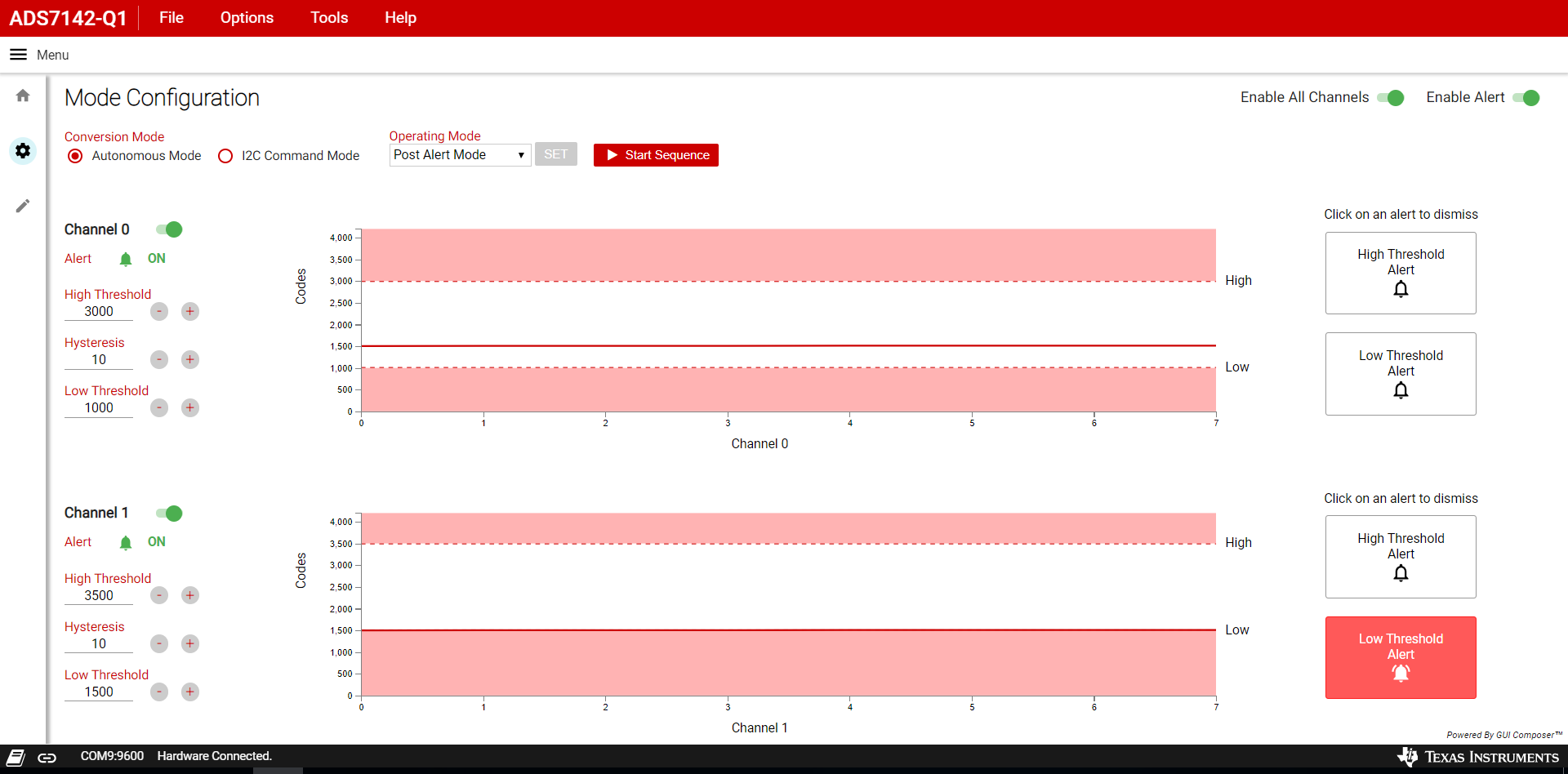SBAU321B November 2018 – June 2021 ADS7142 , ADS7142-Q1
4.1.4 Post Alert Mode
When the device is configured in Post Alert Mode operation, the device starts converting the input signal and storing the data in the data buffer only after it reaches one of the Alert thresholds set for the channels selected in the sequence. If the user aborts the sequence before the data buffer is filled, the device stops storing the conversion results. To understand the steps required to configure the device in this mode, refer to the ADS7142-Q1 data sheet.
Figure 4-5 highlights the ADS7142-Q1 GUI working in Post Alert Mode. Once either of the low or high thresholds is reached, make sure to read the Alert by clicking on the highlighted Alert block in red before running the next sequence.
 Figure 4-5 Operation in Post Alert Mode
Figure 4-5 Operation in Post Alert Mode